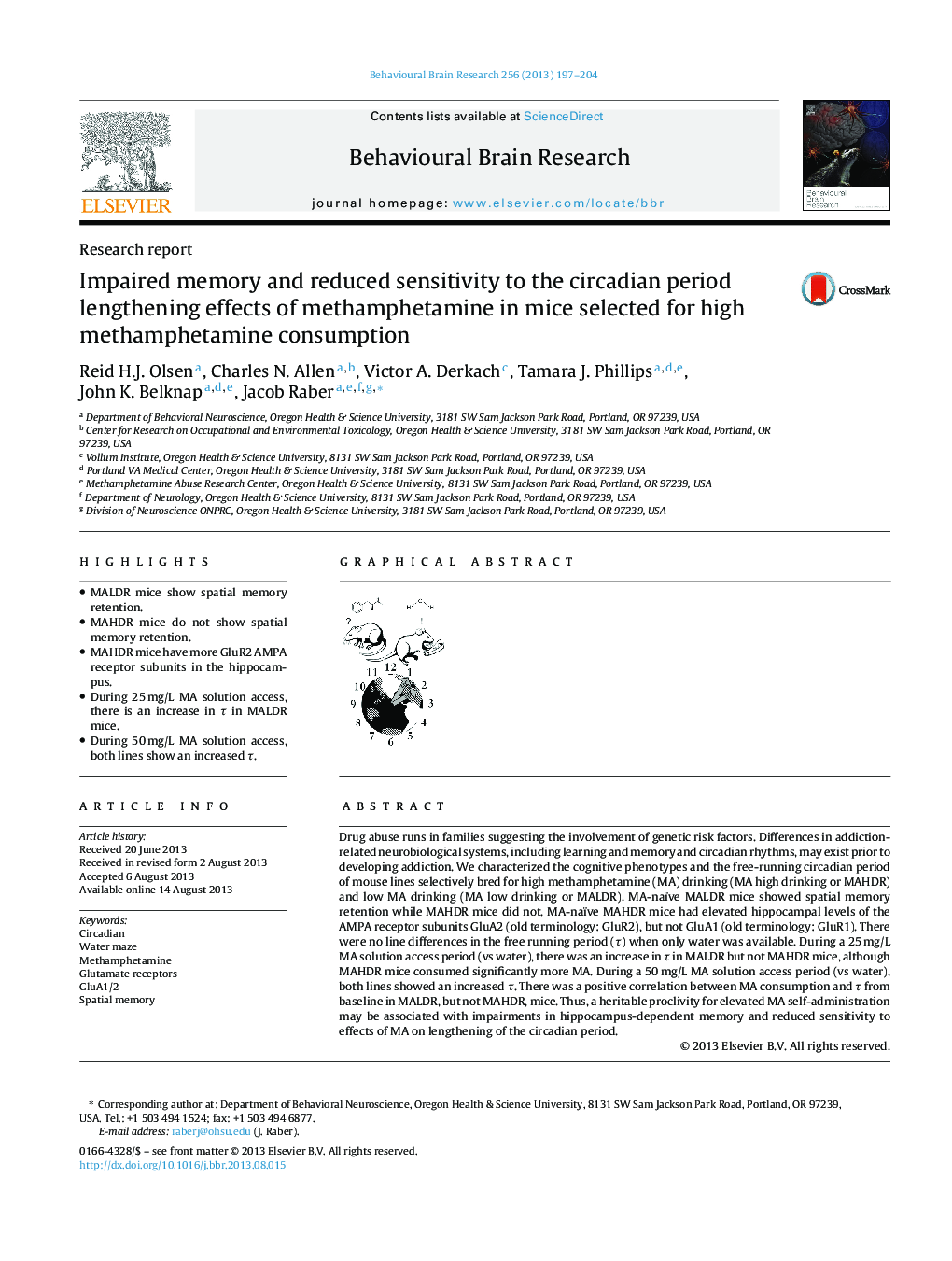| Article ID | Journal | Published Year | Pages | File Type |
|---|---|---|---|---|
| 6258775 | Behavioural Brain Research | 2013 | 8 Pages |
â¢MALDR mice show spatial memory retention.â¢MAHDR mice do not show spatial memory retention.â¢MAHDR mice have more GluR2 AMPA receptor subunits in the hippocampus.â¢During 25 mg/L MA solution access, there is an increase in Ï in MALDR mice.â¢During 50 mg/L MA solution access, both lines show an increased Ï.
Drug abuse runs in families suggesting the involvement of genetic risk factors. Differences in addiction-related neurobiological systems, including learning and memory and circadian rhythms, may exist prior to developing addiction. We characterized the cognitive phenotypes and the free-running circadian period of mouse lines selectively bred for high methamphetamine (MA) drinking (MA high drinking or MAHDR) and low MA drinking (MA low drinking or MALDR). MA-naïve MALDR mice showed spatial memory retention while MAHDR mice did not. MA-naïve MAHDR mice had elevated hippocampal levels of the AMPA receptor subunits GluA2 (old terminology: GluR2), but not GluA1 (old terminology: GluR1). There were no line differences in the free running period (Ï) when only water was available. During a 25Â mg/L MA solution access period (vs water), there was an increase in Ï in MALDR but not MAHDR mice, although MAHDR mice consumed significantly more MA. During a 50Â mg/L MA solution access period (vs water), both lines showed an increased Ï. There was a positive correlation between MA consumption and Ï from baseline in MALDR, but not MAHDR, mice. Thus, a heritable proclivity for elevated MA self-administration may be associated with impairments in hippocampus-dependent memory and reduced sensitivity to effects of MA on lengthening of the circadian period.
Graphical abstractDownload high-res image (74KB)Download full-size image
